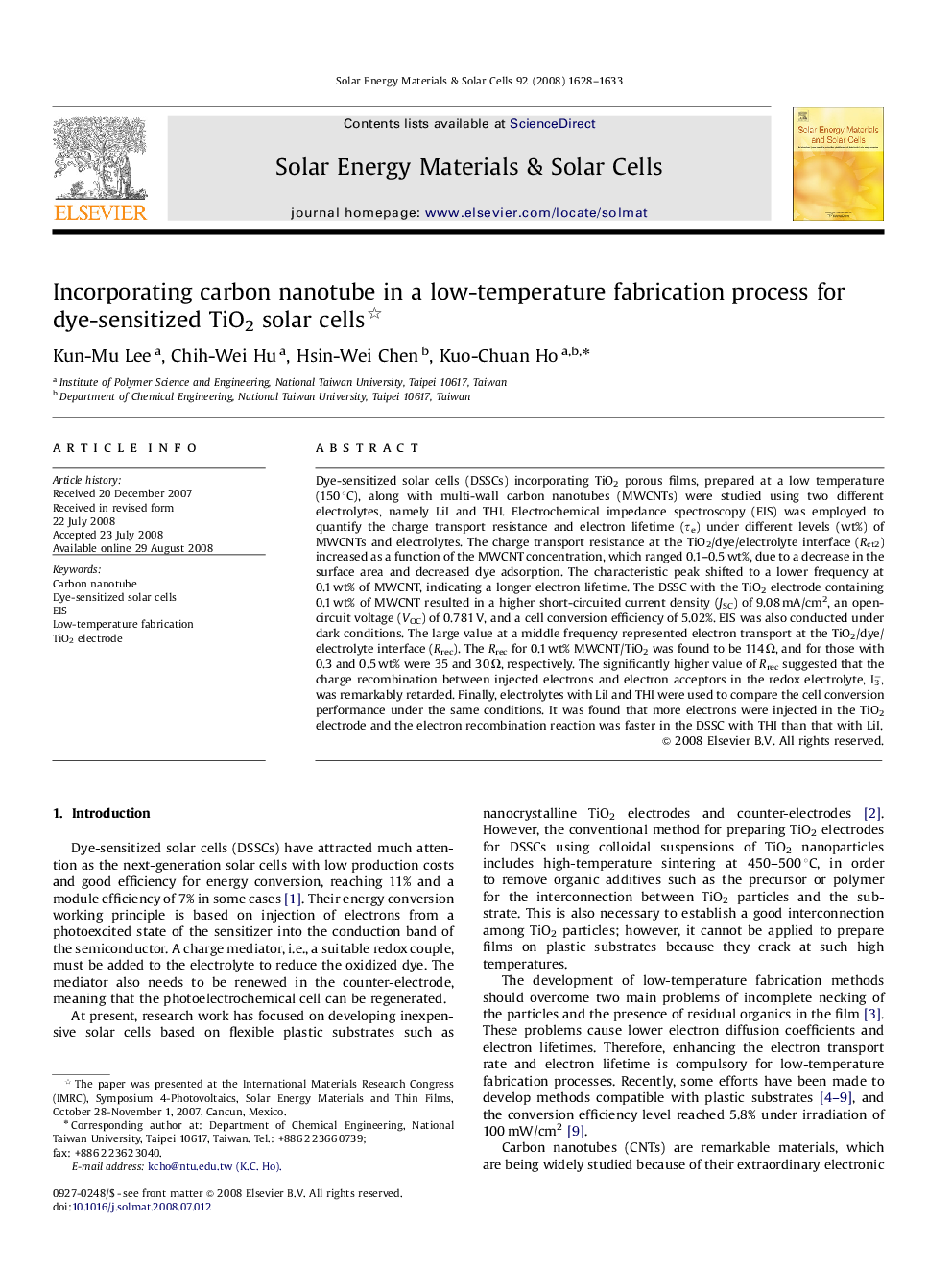| Article ID | Journal | Published Year | Pages | File Type |
|---|---|---|---|---|
| 80219 | Solar Energy Materials and Solar Cells | 2008 | 6 Pages |
Dye-sensitized solar cells (DSSCs) incorporating TiO2 porous films, prepared at a low temperature (150 °C), along with multi-wall carbon nanotubes (MWCNTs) were studied using two different electrolytes, namely LiI and THI. Electrochemical impedance spectroscopy (EIS) was employed to quantify the charge transport resistance and electron lifetime (τe) under different levels (wt%) of MWCNTs and electrolytes. The charge transport resistance at the TiO2/dye/electrolyte interface (Rct2) increased as a function of the MWCNT concentration, which ranged 0.1–0.5 wt%, due to a decrease in the surface area and decreased dye adsorption. The characteristic peak shifted to a lower frequency at 0.1 wt% of MWCNT, indicating a longer electron lifetime. The DSSC with the TiO2 electrode containing 0.1 wt% of MWCNT resulted in a higher short-circuited current density (JSC) of 9.08 mA/cm2, an open-circuit voltage (VOC) of 0.781 V, and a cell conversion efficiency of 5.02%. EIS was also conducted under dark conditions. The large value at a middle frequency represented electron transport at the TiO2/dye/electrolyte interface (Rrec). The Rrec for 0.1 wt% MWCNT/TiO2 was found to be 114 Ω, and for those with 0.3 and 0.5 wt% were 35 and 30 Ω, respectively. The significantly higher value of Rrec suggested that the charge recombination between injected electrons and electron acceptors in the redox electrolyte, I3−, was remarkably retarded. Finally, electrolytes with LiI and THI were used to compare the cell conversion performance under the same conditions. It was found that more electrons were injected in the TiO2 electrode and the electron recombination reaction was faster in the DSSC with THI than that with LiI.
